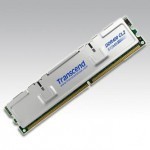EEPROM stands for Electrically Erasable Programmable Read-Only Memory. An EEPROM is like an EPROM chip since it can be written in or programmed more than once. Unlike the EPROM chip, however, an EEPROM chip need not be taken out of the computer or electronic device of which it is part when a new program or data needs to be written on it. Selective programming can be done to an EEPROM chip. The user can alter the value of certain cells without needing to erase the programming on other cells. Thus, Read More
ECC Memory
ECC (Error Correction Codes) is a method used to detect and correct errors introduced during data storage or transmission. Certain kinds of RAM chips inside a computer implement this technique to correct data errors and are known as ECC Memory. ECC Memory chips are predominantly used in servers rather than in client computers. Memory errors are proportional to the amount of RAM in a computer as well as the duration of operation. Since servers typically contain several Gigabytes of RAM and are in operation 24 hours a day, the likelihood Read More
Random Access Memory
Random-access memory is a type of data storage for computers. Commonly known as the acronym RAM or simply memory, random-access memory details the speed in which data that is stored can be accessed at random. This means that the strength of the RAM determines, at random, how fast a piece of data can be pulled and returned. Regardless of where the data is on a drive or whether it is at all related to any previous bit of data is irrelevant; RAM pulls it back at a constant time. RAM Read More
PROM (Programmable Read Only Memory)
PROM stands for Programmable Read-Only Memory. It was invented by Wen Tsing Chow in 1956. Unlike a ROM chip, a PROM chip comes from the manufacturers devoid of any programming. Programming is done by the end user or the makers of electronic devices which require a permanent data storage device. Since it is cheaper than a ROM chip, it is also useful for making experimental programming test runs. Successful programming can later on be applied to a ROM chip at manufacture. A PROM chip can only be programmed with the Read More
NVRAM (Non-Volatile Random Access Memory)
NVRAM is an acronym for Non-Volatile Random Access Memory. NVRAM is a type of Random Access Memory (RAM) that retains its information when power is turned off. The NVRAM is a small 24 pin DIP (Dual Inline Package) integrated circuit chip and is thus able to obtain the power needed to keep it running from the CMOS battery installed in your motherboard. It keeps track of various system parameters such as serial number, Ethernet MAC (Media Access Control) address, HOSTID, date of manufacture, etc. NVRAM is therefore a type of Read More
What does RAM Stand For?
Random Access Memory (RAM) is a type of computer memory. It derives its name from the fact that any piece of data stored on it can be accessed at any time. RAM however stores data for as long as the computer is switched on or is in use. It is the most common type of computer memory available today. The very first form of RAM was the magnetic core memory. It was in use till the introduction of static and dynamic integrated RAM. Prior to that, computers utilized vacuum tubes, Read More
Unbuffered Memory

Unbuffered memory, or unregistered memory, is memory in which no hardware register exists between a RAM chip and a memory controller. Unbuffered memory is not as stable as buffered memory, but is faster and cheaper to implement. While buffered memory may be necessary in some computer systems, such as high-end corporate servers and workstations, where large amounts of memory are accessed on a regular basis, personal computers usually have unbuffered memory because they can be smaller, faster, and less expensive. How Unbuffered Memory Works In a typical system that Read More
SDR SDRAM
SDR SDRAM is Single Data Rate SDRAM. SDR SDRAM is the original SDRAM standard, which has since been replaced by DDR SDRAM. DDR SDRAM doubles the bandwidth of SDR DRAM by transferring data twice per cycle on both edges of the clock signal, implementing burst mode data transfer. Standard SDR SDRAM DIMMs SDR SDRAM is normally packaged in DIMM modules. SDRAM DIMM modules are sold according to clock speed (MHz), bus speed (megatransfers per second), and transfer rate (megabytes per second. DIMM Module Chip Type Clock Speed Bus Speed Transfer Read More
Firmware
We all use electronic devices, whether they are mobile phones, computer routers, MP3 players, cable boxes, etc. These electronic devices include hardware, the physical electronic components and software, programs that help these components run effectively. Firmware is a mix of both. Firmware Firmware is usually defined as a type of program that runs within an electronic device. Firmware is not categorized either as hardware or software, but a mix of both. The reason firmware is considered a combination of both categories is that firmware employs an executable program (.exe) and Read More
EPROM (Erasable Programmable Read Only Memory)
EPROM or Erasable Programmable Read Only Memory was invented by Engr. Dov Frohman. It is a ROM-type chip that can hold data from 10-20 years. It is different from PROM because it can be programmed more than once. An EPROM programming is erased only through exposure to ultra violet light. The EPROM is configured or reconfigured using an EPROM programmer. Configuring an EPROM An EPROM is an array of columns and rows. Each intersection is called a cell and each cell has a floating gate transistor and a control gate Read More


Share on: